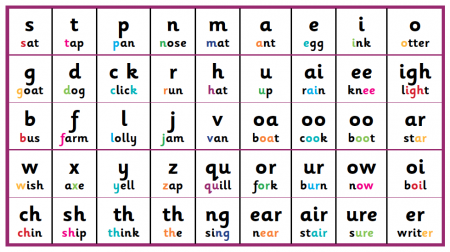When we teach English to young students, they are usually starting to learn Reading and writing. For this reason, introducing phonics is a good way to reinforce this process and develop literacy skills in English.
As English is not a phonetic language like Spanish, it has particular sounds and graphemes that we should teach to improve the learning process.
A good way to start with phonics if you are teaching Infant is working in parallel with the tutor, introducing the letters at the same time as in Spanish. But if they are older and already know letters, you can start with sounds that are different in English, like /h/, /w/, /u/…
Using phonics in class is a complex process, let’s see it in depth with the following steps.
On this step you only have to show a letter and sound out. There are several phonics methods and most of them have a chant or a story to sound out the letters. Using a particular gesture to identify the letter is also very helpful.
For example /s/ /h/
When they recognise different letter sounds you can find words that start with these letters.
In the following chart you have all the sounds in English.
 https://www.theschoolrun.com/phonics-teaching-step-by-step
https://www.theschoolrun.com/phonics-teaching-step-by-step
Then, they are ready to blend the letters to form words. You sound out the letters quickly to form a word like:
s-i-t p-e-n c-a-p m-o-p
These are called CVC words (consonant-vowel-consonant) and it’s the first step to start blending sounds into words.

Once they can blend CVC words, it’s time to introduce consonant clusters, these are two consonants that go together like:
Tr- trap
Pl – plane
Br- Brown
And clusters that go at the end of the word:
-th (tooth) -sh (fish) -ch (much)
Digraphs are two letters that together make one sound.
They can be consonant digraphs: /ch/ chick, chocolate
/sh/ sheep, shut
/th/ this, thin
And vowel digraghs, such as:
/oo/ room
/ee/ knee
/ea/ meat
These are only the introductory steps to phonics and as you probably know the adquisition of literacy skills is a longer process. When you introduce phonics in the English class stablishing as a routine, using lots of visuals and using the words in context are the key to success. For example, having wordwalls in the class where you can refer to the words everytime they appear in an activity or a text is one of the most significant ways to teach phonics.
Teaching phonics have a lot of benefits for the children, not only helping them to develop their literacy skills in English, but also raising awareness of the reading and writing process and facilitating learning in general.